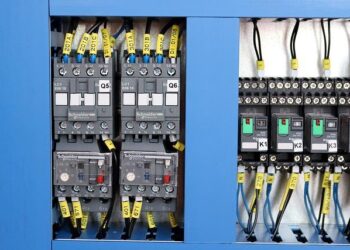Norway has officially launched its new national Carbon Capture, Utilization, and Storage (CCUS) cluster, marking a significant step forward in the country’s efforts to combat climate change. The initiative, unveiled today, aims to accelerate the development and deployment of innovative technologies that capture and store carbon emissions from industrial sources, positioning Norway as a leader in sustainable energy solutions. With substantial government backing and collaboration across multiple sectors, the CCUS cluster is expected to play a crucial role in meeting Norway’s ambitious emissions reduction targets while fostering economic growth in emerging green industries.
Norway Unveils Ambitious Carbon Capture and Storage Cluster to Boost Emission Reductions
In a significant stride toward combating climate change, Norway has launched a groundbreaking Carbon Capture, Utilization, and Storage (CCUS) cluster designed to dramatically reduce industrial emissions across the country. This initiative brings together key stakeholders from the energy sector, government, and research institutions, aiming to create an integrated network for capturing CO2 from multiple sources and safely storing it deep underground. The cluster is expected to become a model for large-scale CCUS deployment, positioning Norway as a leader in the global effort to meet ambitious climate targets.
The new CCUS cluster focuses on three main pillars:
- Expansion of capture facilities: Enhancing existing plants and building new infrastructure to maximize CO2 capture capacity.
- Transport optimization: Developing efficient pipeline networks to move captured carbon to storage sites.
- Safe geological storage: Utilizing Norway’s extensive offshore sedimentary basins to securely sequester emissions for centuries.
| Target Year | Estimated CO2 Capture Capacity (Million Tons) | Participating Sectors |
|---|---|---|
| 2025 | 2.5 | Oil & Gas, Cement |
| 2030 | 10 | Oil & Gas, Cement, Waste Management |
| 2040 | 20+ | Multi-industrial |
Strategic Partnerships and Advanced Technologies Drive Norway’s CCUS Initiative Forward
Norway’s ambitious CCUS (Carbon Capture, Utilization, and Storage) strategy is gaining momentum through a network of strategic alliances between government bodies, industry leaders, and research institutions. These partnerships are crucial for pooling expertise, sharing resources, and driving large-scale deployment of carbon capture technologies. Key players from the oil and gas sector, clean energy innovators, and academic centers are collaborating under a unified framework, ensuring that innovations swiftly transition from pilot projects to commercial viability. This cooperative approach not only accelerates technological breakthroughs but also fosters an ecosystem conducive to sustainable industrial decarbonization.
On the technology front, the initiative leverages cutting-edge advancements to maximize efficiency and cost-effectiveness. Innovations such as advanced solvent capture methods, real-time monitoring systems, and integration with offshore storage reservoirs illustrate Norway’s commitment to staying at the forefront of CCUS development. Supporting these technologies are robust digital platforms that optimize operation and maintenance, ensuring safe and transparent carbon management. Below is a snapshot of critical technologies being advanced within the cluster:
| Technology | Purpose | Status |
|---|---|---|
| Advanced Solvent Capture | Higher CO‚āā absorption efficiency | Pilot phase |
| Real-Time Monitoring | Leak detection & system optimization | Commercial use |
| Offshore CO‚āā Storage | Long-term carbon sequestration | Operational |
| Digital Twin Models | Simulation & predictive maintenance | Development |
- Collaborative innovation hubs driving cross-sector knowledge transfer
- Government incentives bolstering investment in low-carbon technology
- Scalable infrastructure designed to support future export opportunities
Policy Recommendations to Maximize Impact and Support Sustainable Energy Transition
To fully harness the potential of Norway’s new national CCUS cluster, policymakers must focus on creating a robust regulatory framework that encourages innovation and collaboration across industries. This includes implementing clear carbon pricing mechanisms to provide economic incentives for emissions reduction, alongside streamlined permitting processes that accelerate project deployment without compromising environmental standards. Additionally, fostering public-private partnerships will be critical to leverage expertise and financial resources, while strengthening international cooperation can boost technology transfer and scale-up efforts.
Key policy priorities should also address:
- Investment in research and development to enhance CCUS technology efficiency and cost-effectiveness
- Supporting infrastructure development, such as CO2 transport and storage networks
- Community engagement initiatives to build public trust and awareness
- Training programs to develop a skilled workforce tailored for the evolving energy landscape
| Policy Area | Recommendation |
|---|---|
| Regulatory | Establish carbon pricing and streamlined permits |
| Financial | Increase R&D grants and investment incentives |
| Infrastructure | Expand CO2 transport and storage networks |
| Social | Enhance public engagement and workforce training |
Future Outlook
As Norway takes a bold step forward with the launch of its new national CCUS cluster, the initiative underscores the country’s commitment to pioneering sustainable solutions in the fight against climate change. By leveraging advanced carbon capture, utilization, and storage technologies, Norway aims not only to reduce its own emissions but also to set a benchmark for global decarbonization efforts. The coming months will be crucial in observing how this ambitious project unfolds and its impact on the broader energy transition landscape.
















